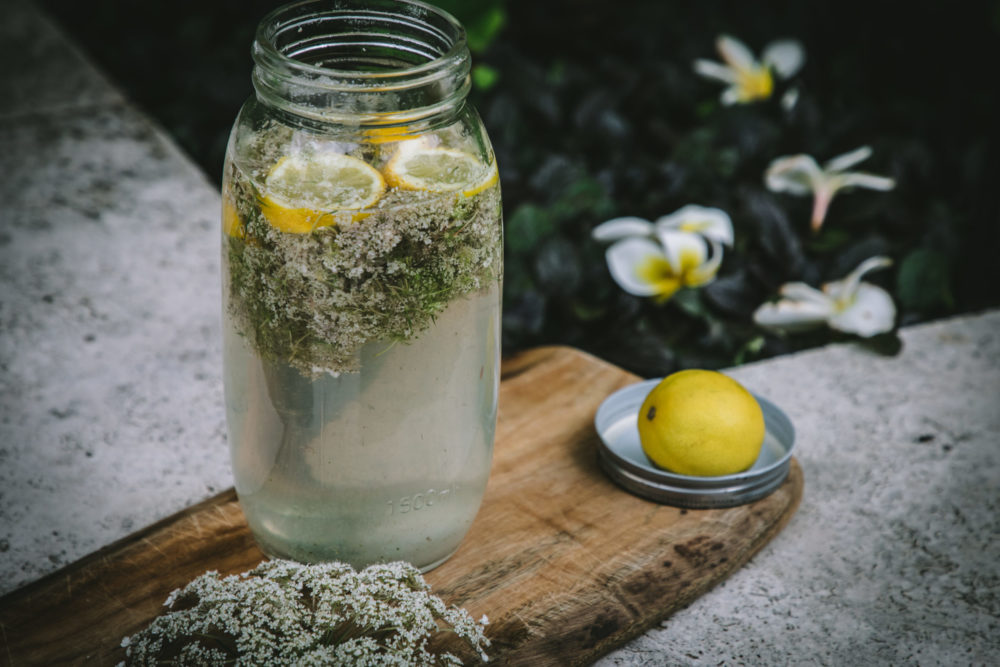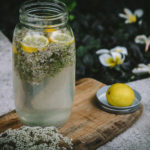
Elderflower
I’ve just spent the weekend at my cousin Anna’s farm in the Southern Highlands. I’ve never been there in the summer and I was delighted to find row upon row of lacy, parasol-like sprays of elderflower (Sambucus) growing along the roadside. I decided to try making some elderflower and lime cordial with my surplus of limes. Keep the flower heads fresh in a tub of iced water until you’re ready to make the cordial, preferably within 24 hours of picking them. Make sure there are no insects left behind! It’s delicious with either still or sparkling water, and I think it’d taste pretty good with gin or vodka, too.
These aromatic flowers have been used in kitchens since Roman times. Most of the species found in Australia were garden species that have become roadside weeds. Indigenous species grow on the edge of rainforests in NSW and the Otway Ranges in Victoria. Elderflowers have a subtle aroma that can be infused easily into liquids.
Elderflower plants also have a long history of medicinal use, with teas made from the bark. The elderflower has been used for many ailments, including stomach aches, but it’s most commonly used as a topical application for infections, bruises and as an anti-inflammatory for wounds. Traditional uses also included treatment for sore throats, coughs and respiratory infections. After researching the elderflower, I’m going to try growing some in my garden!
If you like making your own cordials, you might like to try making these fancy fruit syrups.
Best wishes,
Amanda
PS: If you’d like to read more, please subscribe to my monthly newsletter for stories, recipes and tips for simple, nutritious meals.
Elderflower and Lime Cordial
Ingredients
- 20 elderflower heads
- 3 limes
- 2 cups caster sugar
Instructions
- Wash the elderflower heads well, taking care that there are no insects left behind.
- Juice one lime and thinly slice the other two.
- Add the elderflower blooms, lime juice and lime slices to a 1.5 L capacity glass jar.
- Stir the sugar into 1L of water in a large saucepan and bring to boil, stirring until the sugar has dissolved.
- Pour the sugar water through a funnel into the jar, over and set aside in a cool part of the kitchen for 24 hours.
- Place a sieve lined with muslin (or a Chux cloth) on top of a large bowl and strain the liquid, then decant into bottles and refrigerate.

Leave a Reply